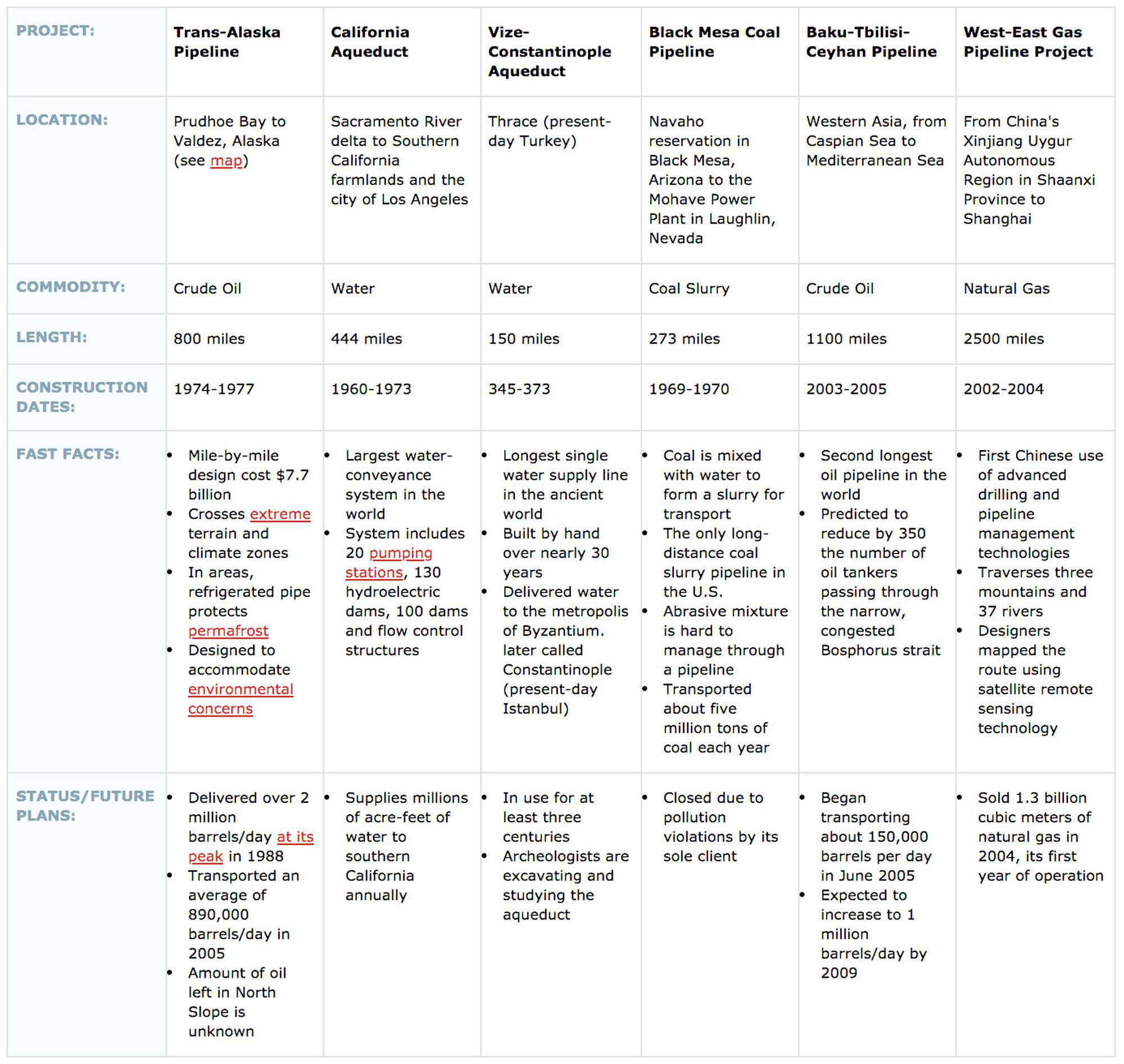Pipelines & Aqueducts
Some resources can be moved from point to point by truck, train, boat or plane. But these options were impossible for the North Slope oil discovered above the Arctic Circle, hundreds of miles from the Alaskan road system in one of the world's harshest weather zones.
The solution? A pipeline — a stationary, 800-mile-long tube dedicated to delivering oil to a shipping terminal in the year-round port of Valdez.
Pipeline-like transports are not new. From ancient times, engineers have designed stone, concrete or steel structures for moving resources to where they are needed. Roman aqueducts, built to carry water to cities, are probably the most famous ancient systems. There are over 200,000 miles of oil pipeline in the U.S. alone, along with natural gas pipelines, aqueducts, and other dedicated resource transports.








